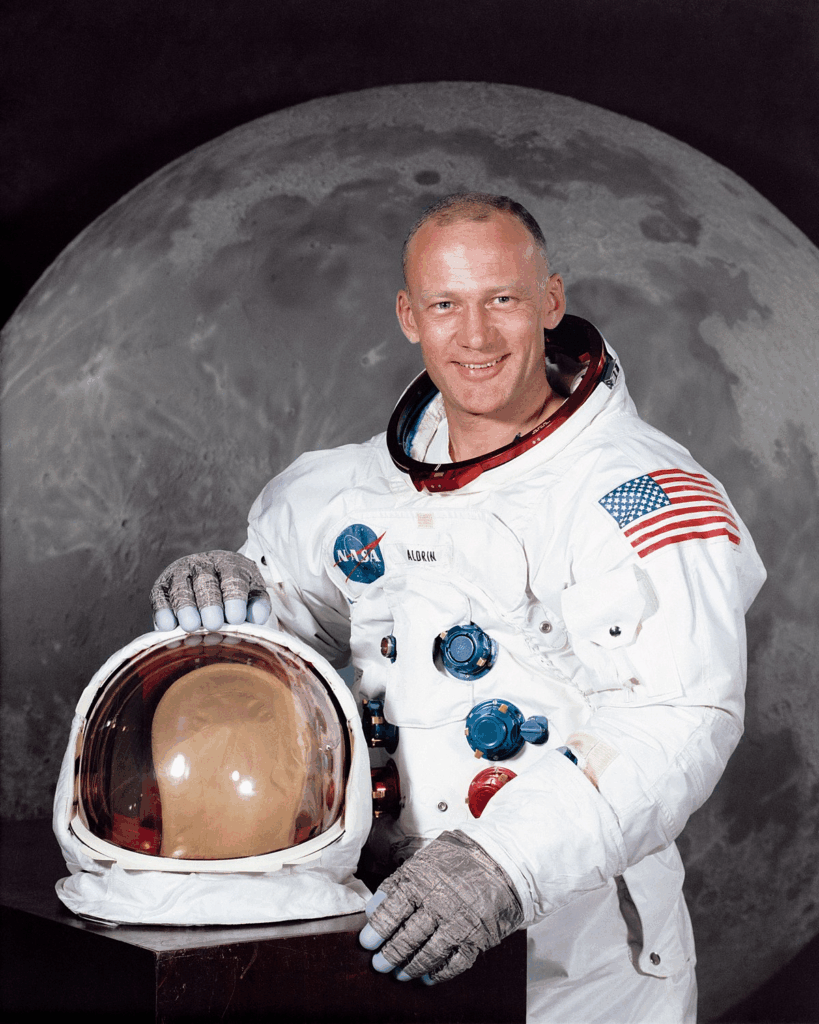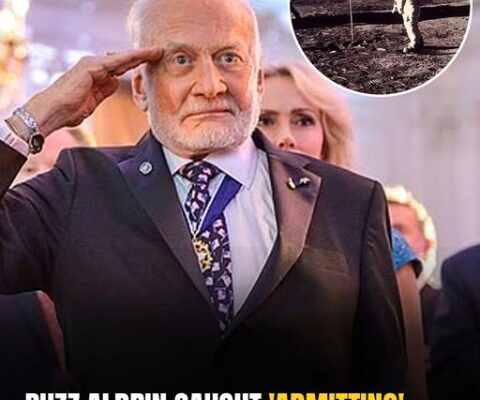Unearthed Buzz Aldrin Footage Fuels Moon Landing Conspiracy Theories as America Marks 59 Years Since Apollo 11
As the United States celebrates the 59th anniversary of the historic Apollo 11 moon landing, surprising footage of Buzz Aldrin has ignited fresh conspiracy rumors questioning whether the mission was ever real.
Buzz Aldrin, famously known as the second man to walk on the moon after Neil Armstrong, has long been open about his experience. Yet, two viral clips from past interviews have some viewers convinced he inadvertently admitted the moon landing was staged.
The clips—circulated widely online—show Aldrin in conversations where he appears to deny that America actually landed on the moon. The most notable moment comes from Aldrin’s 2000 appearance on The Conan O’Brien Show, when the host recalled watching the moon landing broadcast as a child.
Aldrin’s sharp response surprised everyone: “No, you didn’t. There wasn’t any television, there wasn’t anyone taking a picture. You watched an animation.”
Conan was left speechless by the unexpected reply, and the awkward exchange has since racked up millions of views, fueling endless debate about what Aldrin truly meant.

In 2015, an eight-year-old girl asked legendary astronaut Buzz Aldrin a simple question: why hasn’t anyone returned to the moon? His reply — “Because we didn’t go there, and that’s the way it happened” — immediately went viral, fueling renewed conspiracy theories that the Apollo 11 mission was staged.
But NASA and experts have long stood firm. The Apollo 11 landing is backed by solid evidence: moon rocks collected during the mission, telemetry data tracked by scientists worldwide, and the detailed testimonies of thousands of engineers, astronauts, and specialists involved in the historic journey.
The Apollo 11 mission launched from Florida’s Kennedy Space Center on July 16, 1969, at 9:32 a.m. ET. Onboard were Commander Neil Armstrong, Lunar Module Pilot Buzz Aldrin, and Command Module Pilot Michael Collins. Armstrong and Aldrin descended to the lunar surface in the Eagle lander on July 20, 1969, at 4:17 p.m. ET, while Collins remained in orbit. Moments later, Armstrong delivered his iconic line:
“That’s one small step for man, one giant leap for mankind.”
Around 600 million viewers worldwide witnessed the historic event live on television — yet questions about its authenticity have persisted for decades. Skepticism intensified during the 1970s amidst political scandals like Watergate and the Pentagon Papers, and since then, conspiracy theories have centered on alleged inconsistencies in lighting, suspicious interviews, and supposed studio sets.
Despite this, NASA consistently rejects these claims, pointing to irrefutable physical evidence and extensive documentation proving the mission’s authenticity.
The recent resurgence of these conspiracy theories largely stems from misinterpreted clips of Aldrin’s interviews. One of the most notable came from his 2000 appearance on The Conan O’Brien Show. When O’Brien reminisced about watching the moon landing broadcast as a child, Aldrin abruptly said:
“No, you didn’t. There wasn’t any television, there wasn’t anyone taking a picture. You watched an animation.”
This moment baffled viewers and quickly went viral. But Aldrin wasn’t denying the mission. He was referring to the animations and graphics broadcasters used alongside real footage to help explain the landing to audiences at the time. As Aldrin explained on the show:
“You watched animation, so you associated what you saw with… you heard me talking about ‘contact light, engine stopped,’ and then Neil said, ‘Houston, tranquility base. The Eagle has landed.’ How about that? Not a bad line.”
Similarly, in the 2015 interview with the young girl at the National Book Festival, Aldrin’s statement that “we didn’t go there” was taken out of context. The video circulated widely but ended before Aldrin clarified the real reason why lunar missions stopped: budget cuts and shifting government priorities. He emphasized:
“We need to know why something stopped in the past if we want it to keep going. It’s a matter of resources and money — new missions need new equipment.”
The truth is that after the Apollo program, NASA shifted focus to other space initiatives, not because the moon landing was faked.
What do you think?
Please SHARE this article with family and friends, and let us know your thoughts in the comments below!
